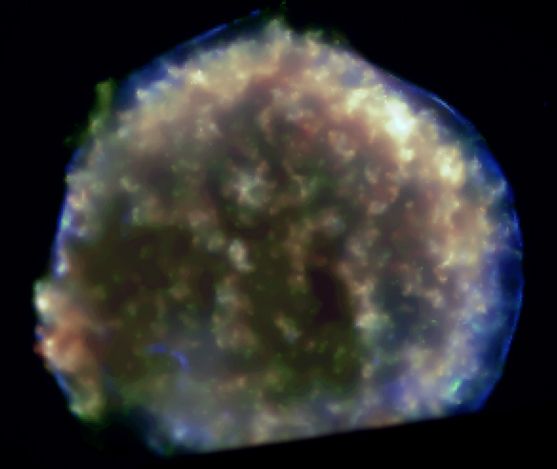X Rays From Tycho s Supernova Remnant

Explanation:
In 1572,
Danish
astronomer
Tycho Brahe
recorded the sudden appearance of
a bright new star in the constellation Cassiopeia.
The
new star faded from view over a period of months and is
believed to have been a supernova, one of the last stellar explosions
seen in our Milky Way galaxy.
Now known
as Tycho's Supernova Remnant, the expanding debris cloud is
shown in this detailed
false-color x-ray image
from the orbiting
Chandra Observatory.
Represented in blue, the highest energy x-rays come from shocked regions
along the outer edges of the supernova remnant, corresponding to gas at
temperatures of 20 million degrees Celsius.
X-rays
from cooler gas (only 10 million degrees or so!) dominate the
remnant's interior.
Unlike some
other supernova remnants,
no hot central
point source
can be found, supporting the theory
that the origin of this stellar explosion
was a runaway nuclear detonation that ultimately
destroyed a white dwarf star.
At a distance of about 7,500 light-years,
Tycho's Supernova Remnant
appears to be nearly 20 light-years across.
This x-ray picture's field of view slightly cuts off the
bottom of the generally spherical cloud.
Authors & editors:
Robert Nemiroff
(MTU) &
Jerry Bonnell
(USRA)
NASA Web Site Statements, Warnings,
and Disclaimers
NASA Official: Jay Norris.
Specific
rights apply.
A service of:
LHEA at
NASA /
GSFC
& Michigan Tech. U.

